Markey Wins Deal to Refurbish Winches for NOAA Research Vessel

Seattle-based deck machinery company Markey Machine said it has recently secured a contract from Bollinger Mississippi Shipbuilding for winch refurbishment aboard NOAA research vessel Ronald H. Brown. The three Markey oceanographic winches that have been aboard for 27 years will receive varied upgrades.“NOAA is working to maximize the service life of each of its vessels, in part by investing in mid-life repairs,” said Jamie LeCompte, NOAA Ship Ronald H. Brown project manager.
Marine Biofouling in Ports: Wet Docks Acting as ‘Hot Spot’ Biofouling Transfer Stations
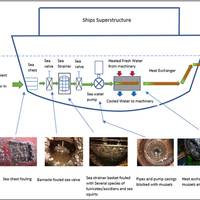
The GEF-UNDP-IMO Glofouling partnership (2017) is a global initiative to counter the environmental issue of invasive aquatic species (IAS) and the resulting harmful ecological and financial damage that can occur when such invasion events are introduced through the medium of biofouling on ships hulls and other marine structures such as those found in the oil and gas industries.One of the key objectives of the Glofouling project is to develop a Global Knowledge Hub and also identify…
Academia’s Climate Change Challenge is Far from Academic
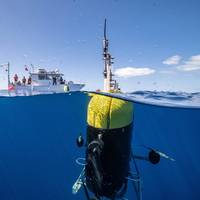
Highlighted in Marine Technology Reporter's MTR100 is the work and technology ongoing in the halls of academia. The most recent report released by the UN Intergovernmental Panel on Climate Change emphasized our warming planet, an expected announcement for many in the scientific community. Faced with the confirmation that human activities have caused an increase in global temperatures, research has turned to seeking answers in the planet’s natural systems. How does each part of the global carbon cycle work and how may it be impacted by the changing climate?
Arctic Sea Ice Lows Mark a New Polar Climate Regime
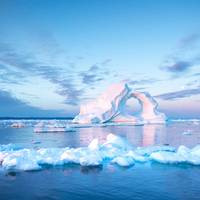
At the edge of the ice blanketing part of the Arctic Ocean, the ice looked sickly. Where thick sheets of ice once sat atop the water, now a layer of soft, spongey slush slid and bobbed atop the waves.From the deck of a research ship under a bright, clear sky, “ice pilot” Paul Ruzycki mused over how quickly the region was changing since he began helping ships spot and navigate between icebergs in 1996.“Not so long ago, I heard that we had 100 years before the Arctic would be ice free in the summer,” he said. “Then I heard 75 years, 25 years, and just recently I heard 15 years.
USCG Polar Security Cutters: The History and Future
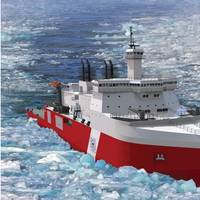
The good news is that work has commenced on the first new heavy polar icebreaker for the United States Coast Guard in 43 years. The bad news is that when it enters service, projected to occur in FY2024, it will be the first new heavy polar icebreaker for the USCG in 47 years.Meanwhile, Russia has approximately 30 active polar icebreakers, including four that are nuclear powered. Arktika, the first of a new class of three heavy polar icebreakers, has commenced sea trials in the Gulf of Finland, with the other two under construction.
Ørsted, US Unis to Study Whales in OWP
Danish developer Orsted U.S. Offshore Wind has signed a research partnership with Rutgers University, the University of Rhode Island and Woods Hole Oceanographic Institution to support academic research activities related to offshore wind.The group is set to launch the Ecosystem and Passive Acoustic Monitoring (ECO-PAM) project.Ørsted signed an initial memorandum of understanding with Rutgers University in May 2019 to support academic research activities related to offshore wind. The ECO-PAM project will be in addition to this initial funding agreement.The company plans to apply the project’s learnings to develop tailored processes and procedures to better protect the North Atlantic right whale during survey, construction and operation phases of their U.S. offshore wind farm portfolio.
GloFouling Gets Going in Pacific
The initial phase of the Glofouling Partnerships project is now well and truly underway with a series of technical workshops in the Pacific, stated International Maritime Organization (IMO).The UN body said that the key message delivered to participants was that once introduced, marine invasive species can be hard to eradicate - and invasive species represent a potential major threat to the Pacific Ocean's biodiversity and the ecological integrity of Small Island Developing States.The GEF-UNDP-IMO GloFouling Partnerships project aims to protect marine biodiversity by addressing bio-invasions by organisms which can build up on ship's hulls and other marine structures.Meanwhile…
Research Vessel Polarstern Returns to Bremerhaven
Antarctic season ends in the homeport after half a year Bremerhaven / Germany, 11 May 2016. on Wednesday, 11 May 2016, the research vessel Polarstern is expected back in its home port of Bremerhaven after a good six months of Antarctic expeditions. In the austral summer, the research vessel of the Alfred Wegener Institute, Helmholtz Centre for Polar and Marine Research (AWI), penetrated into the southern Weddell Sea as far as the Filchner-Ronne Ice Shelf, where oceanographic and biological work which the focus. In addition, the expedition members provided logistical support for a research camp there. Few research vessels in the world are able to penetrate as far into the Antarctic Ocean as the Polarstern has managed to do on this Antarctic expedition.
Oceans Gasping for Breath, Oxygen Running Low!
Rising levels of CO2 are making it hard for fish to breathe in addition to exacerbating global warming and ocean acidification. Climate change has caused a drop in the amount of oxygen dissolved in the oceans in some parts of the world, and those effects should become evident across large parts of the ocean between 2030 and 2040, according to a new study led by researchers at the National Center for Atmospheric Research (NCAR) in Boulder, Colorado. The oceans receive their oxygen supply from the surface via the atmosphere or from phytoplankton, which release oxygen in the water by photosynthesis. When the oceans are warmed they absorb less oxygen and marine life tend to move more slowly.
Polarstern Embarks for Cape Town on Training Cruise
On 29 October 2015 the research icebreaker Polarstern will leave its homeport in Bremerhaven for Cape Town, South Africa, where it is expected to arrive on 1 December. It will take 32 students hailing from 19 countries on board, who will be introduced to the latest methods and instruments used in oceanography. Nine instructors from the Alfred Wegener Institute, Helmholtz Centre for Polar and Marine Research (AWI), the FU Berlin and Ireland’s Galway-Mayo Institute of Technology will teach the participants in the “floating summer school”. 470 applications from around the globe were submitted for the 32 places on the North South Atlantic Transect Training Programme (NoSoAT).
'Amazingly Intact' WWII-era Aircraft Carrier Surveyed

NOAA, working with private industry partners and the U.S. Navy, has confirmed the location and condition of the USS Independence, the lead ship of its class of light aircraft carriers that were critical during the American naval offensive in the Pacific during World War II. Resting in 2,600 feet of water off California's Farallon Islands, the carrier is "amazingly intact," said NOAA scientists, with its hull and flight deck clearly visible, and what appears to be a plane in the carrier's hangar bay.
Three NOAA scientists honored by White House
The White House yesterday awarded three NOAA scientists with Presidential Early Career Awards for Scientists and Engineers. The award is the highest honor given by the federal government to outstanding scientists and engineers in the early stages of their careers. Laboratory. The NOAA scientists are part of a group of 102 scientists from across federal agencies that received the prestigious award. “NOAA is home to some of the world’s leading scientific research and our scientists strive each day to tackle some of the biggest challenges facing our planet,” said NOAA Administrator Kathryn Sullivan, Ph.D. “Through their research on improving sustainable fisheries management…
UDEI Hosts Wind Energy Symposium

Experts explore future of wind energy research in two-day symposium at the University of Delaware Energy Institute (UDEI). How would wind turbines in the ocean alter the wind flow? Is wind energy a practical solution for powering electrical grids? Forward-looking questions such as those were addressed by experts in the field of wind energy at a recent symposium sponsored by the University of Delaware Energy Institute (UDEI). The two-day event, titled “The Importance of Meteorology to Wind Energy: Research Needs for the Next 10 Years…
Ship Exhaust Gas Emissions in Australia Quantified

Research by CSIRO & Australian Maritime College estimates that about 30% NOX and 20% SOX harmful emissions emanate from shipping. The authors of a recent research paper, Dr Ian Galbally from CSIRO Marine and Atmospheric Research, and the Australian Maritime College’s Dr Laurie Goldsworthy estimate that approximately 30 per cent of anthropogenic nitrogen oxide emissions and 20 per cent of oxides of sulphur emissions generated in the Australian region may come from shipping. These are non greenhouse gases which have the potential to affect the air quality near coastal regions…
Steep Increase in Global CO2 Emissions
Global emissions of carbon dioxide (CO2) – the main cause of global warming – increased by 45% between 1990 and 2010, and reached an all-time high of 33 billion tonnes in 2010. Increased energy efficiency, nuclear energy and the growing contribution of renewable energy are not compensating for the globally increasing demand for power and transport, which is strongest in developing countries. This increase took place despite emission reductions in industrialized countries during the same period. Even though different countries show widely variable emission trends, industrialised countries are likely to meet the collective Kyoto target of a 5.2 % reduction of greenhouse gas emissions by 2012 as a group…
NOAA Study Investigates El Nino Effects
Coastal communities along the U.S. East Coast may be at risk to higher sea levels accompanied by more destructive storm surges in future El Niño years, according to a new study by NOAA. The study was prompted by an unusual number of destructive storm surges along the East Coast during the 2009-2010 El Niño winter. The study, led by Bill Sweet, Ph.D. from NOAA’s Center for Operational Oceanographic Products and Services, examined water levels and storm surge events during the ’cool season’ of October to April for the past five decades at four sites representative of much of the East Coast: Boston, Atlantic City, N.J., Norfolk, Va., and Charleston, S.C.
NOAA Announces New Members of The Hydrographic Services Review Panel
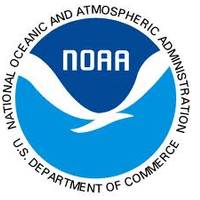
NOAA Administrator Jane Lubchenco recently appointed nine new members to the Hydrographic Services Review Panel, a federal advisory committee that gives NOAA independent advice for improving ocean and coastal navigation products, information, data and services. “Optimizing the benefits of navigation services and products is a priority for the agency,” said Margaret Spring, chief of staff for NOAA and the agency’s representative to the Committee on the Marine Transportation System (CMTS).
New Members of NOAA’s Hydrographic Services Review Panel
NOAA Administrator Jane Lubchenco recently appointed nine new members to the Hydrographic Services Review Panel, a federal advisory committee that gives NOAA independent advice for improving ocean and coastal navigation products, information, data and services. “Optimizing the benefits of navigation services and products is a priority for the agency,” said Margaret Spring, chief of staff for NOAA and the agency’s representative to the Committee on the Marine Transportation System (CMTS). “We look forward to hearing perspectives and receiving advice from our new committee members, who represent a wide variety of maritime and coastal zone stakeholder interests. Dr. Lawson W. Stephen Carmel, Maersk Line, Ltd. Jeffrey Carothers, Fugro Consultants, Inc. Dr. Dr. David A. Scott R.
Great Boats of 2000
Every year, MarineNews chooses a handful of vessels delivered in the past 12 months and bestows upon them the distinction of “Great Boats.” The boats are chosen for innovations in design, construction and utilization. Following are the 17 vessels or groups of vessels chosen as the Great Boats of 2000. Crowley Marine Services delivered Alert, Attentive, and Aware, a series of three 140-ft., 10,000-hp Prevention and Response Tugs (PRTs), to Alyeska Pipeline Service Company in Valdez, Alaska. Specifically designed and developed for Alyeska, the boats will be used by Crowley in the Trans Alaska Pipeline System trade. Alert was deployed in February; Attentive was delivered in June, and Aware was delivered in July.
New Deliveries
San Rafael, a 204 x 44 x 16 ft. OSV was recently launched by Eastern Shipbuilding Group. The vessel is being constructed for Naviera Tamaulipas, S.A. de C.V. of Tampico, Mexico, for operations in the Bahia de Campeche fields off Eastern Mexico. Capacities include 110,000 gallons of fuel, 211,000 gallons of drill water/ballast, 7,200 cu. ft. of bulk mud in six tanks, and 3,012 barrels of liquid mud. The propulsion plant consists of a pair of Caterpillar 3516B main engines rated at 2,000 hp each @ 1,600 rpm, complete with Caterpillar Engine Vision Alarm and Monitoring System, coupled to Reintjes WAF-862 gearboxes, with 96 in. diameter, four-blade stainless steel propellers.
General Dynamics Report 4Q Results
General Dynamics reported 2001 fourth quarter net earnings of $246 million, $1.21 per share on a fully diluted basis, on sales of $3.5 billion. This represents an 11 percent earnings per share increase over the fourth quarter of 2000, when net earnings were $219 million, $1.09 per share, on sales of $2.7 billion. The quarter ended on December 31, 2001. Full year 2001 net earnings on a recurring basis were $915 million, $4.51 per fully diluted share, on sales of $12.2 billion. This is a 12 percent per share increase over 2000 earnings of $811 million on a recurring basis, $4.03 per fully diluted share, on sales of $10.4 billion. Including favorable…
NOAA Research Vessel on Vegetarian Diet
The Huron Explorer, a 41-ft. former Coast Guard vessel now serving on the Great Lakes is the first modern U.S. research vessel to operate free of petroleum products. A National Oceanic and Atmospheric Administration (NOAA) small research vessel is now powered by soybeans. The Huron Explorer, a 41-ft. former Coast Guard vessel now serving on the Great Lakes, is the first U.S. research vessel to operate free of petroleum products. The vessel was given an award by the Department of Energy's Federal Energy Management Program during an Earth Day Week event on the shores of Lake Michigan. "NOAA has a commitment to stewardship of the environment, and this research vessel, the R/V Huron Explorer, demonstrates that commitment in very practical ways.









